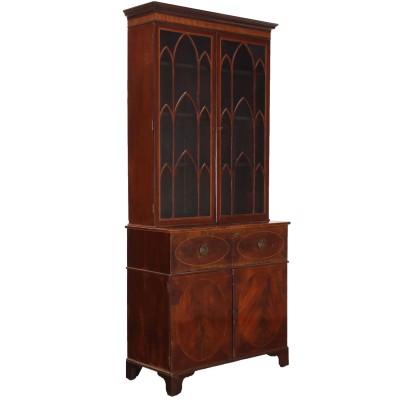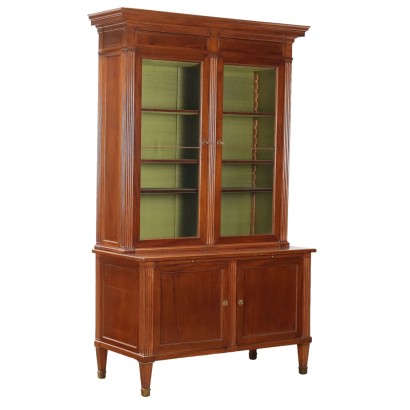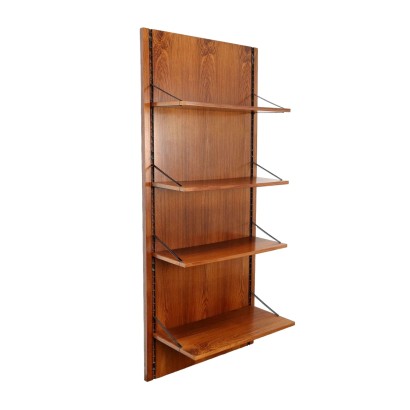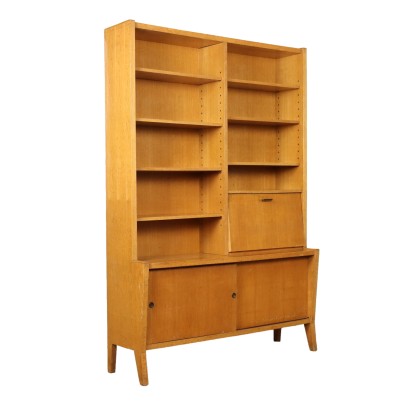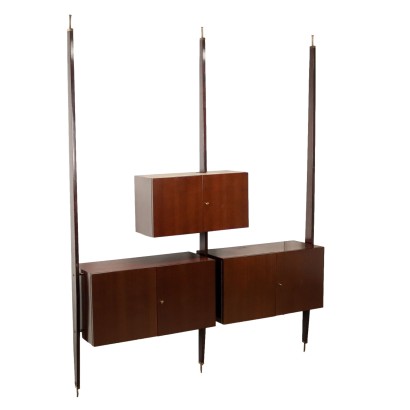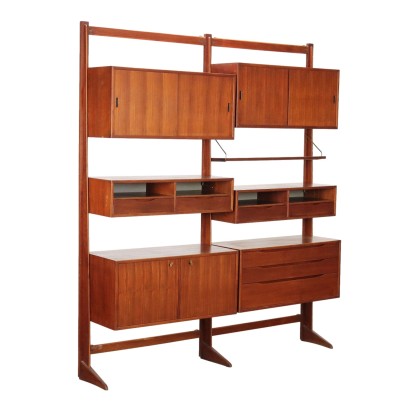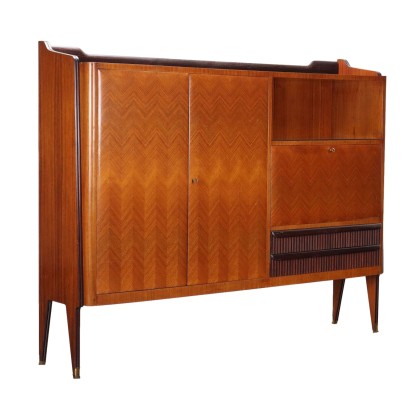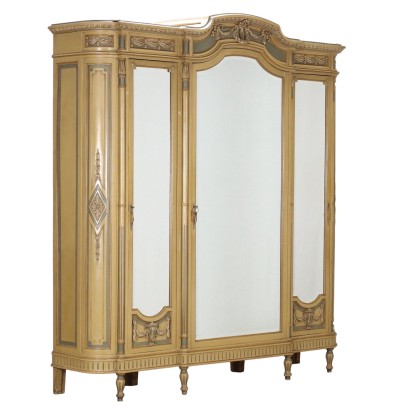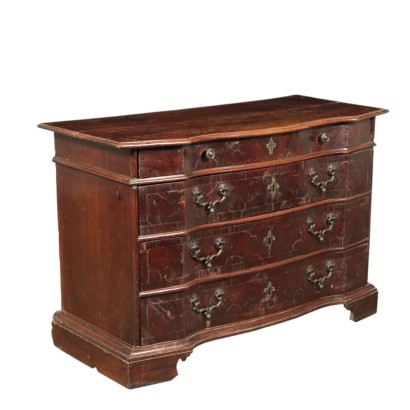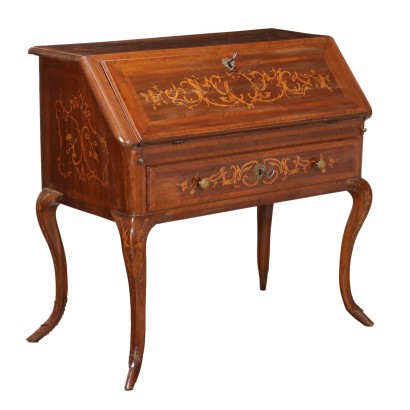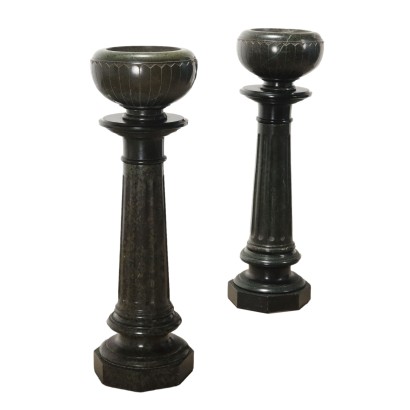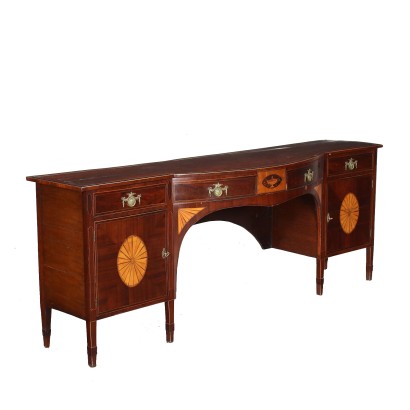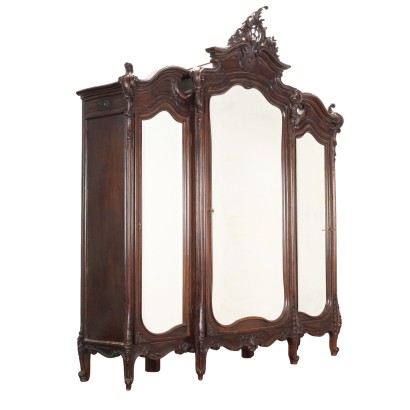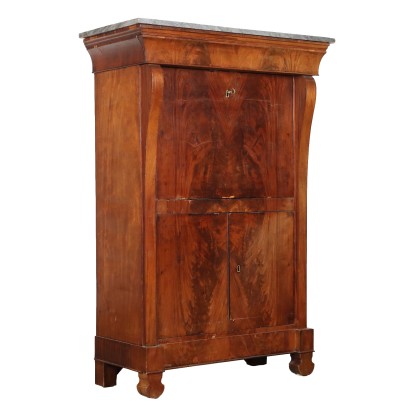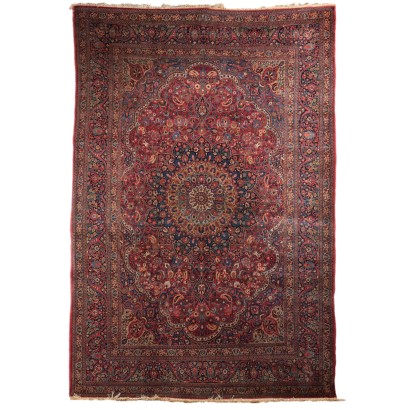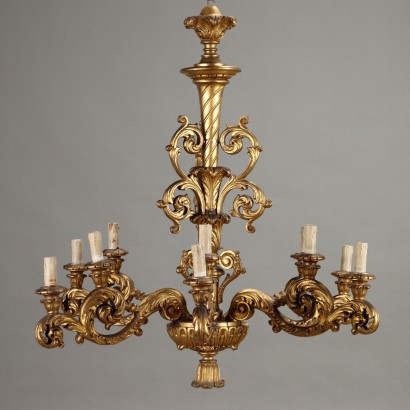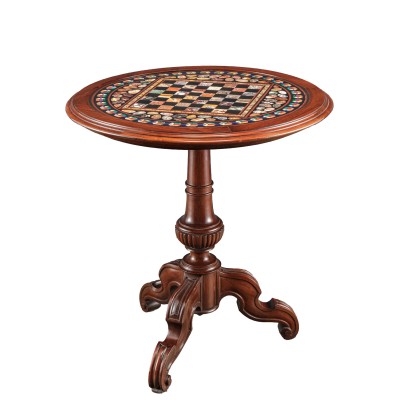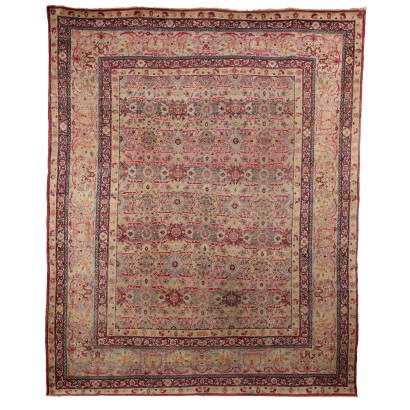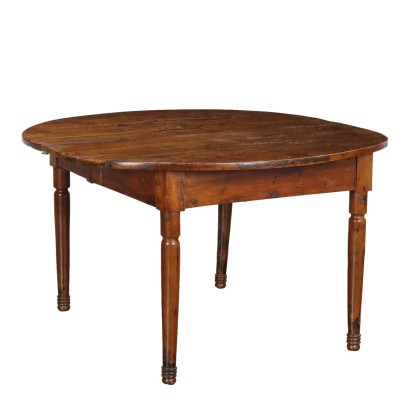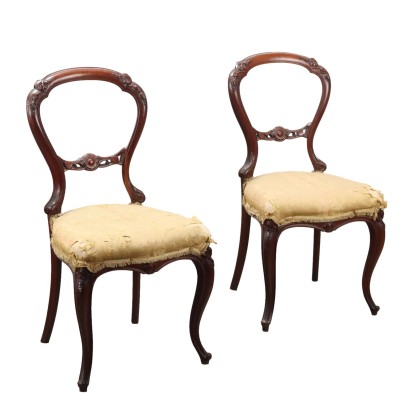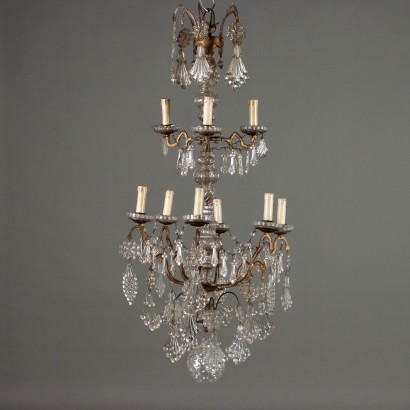Antique Bookcase Neo-Gothic Style Mahogany XIX Century - England, Early XIX Century
Features
England, Early XIX Century
Style: Neo-Gothique Revival
Age: 19th Century / 1801 - 1900
Origin: England
Main essence: Silver Fir , Mahogany , Sessile Oak
Description
Neo-Gothic style bookcase in mahogany, interior in oak and fir. Central drop-leaf drawer concealing internal cabinet with open compartments, drawers, central door and top in red leather, veneered and bipartite front with elliptical maple fillets. Lower doors veneered with elliptical maple fillets repeating the drawer above, bracket feet. Upper part with glass doors with overlapping Gothic arches, cymatium with inlaid maple band, adjustable internal shelves with lateral rack. England, first quarter of the 19th century.
Product Condition:
Product that due to age and wear requires restoration and polishing. We try to present the real condition of the furniture as completely as possible with the photos. If some details are not clear from the photos, what is reported in the description is valid.
Dimensions (cm):
Height: 111,5
Width: 115
Depth: 53,5
Maximum size (cm):
Height: 262
Additional Information
Style: Neo-Gothique Revival
Neo-Gothic is an artistic movement born in Europe during the nineteenth century, which aimed at the revival of medieval art and especially Gothic architecture.
This movement influenced Great Britain in particular, in step with the English Gothic tradition.
The most original phase of the movement began in the middle of the century, which drew from previous experiences the lively polychromy and the choice of materials, in conjunction with the organic functionality of the buildings and the use of metal.
Find out more on Neo-Gothic with our insights:
FineArt: Harp Erard, in Neo-Gothic style
Additional links
The Austrian Taste of Baroque
The European Baroque
The Figurative Arts of the Baroque
Age: 19th Century / 1801 - 1900
19th Century / 1801 - 1900Main essence:
Silver Fir
Soft coniferous wood, used for rustic furniture or to build the chest, that is the structure, of furniture then veneered in more precious woods. It has been used since ancient times, its most valuable use is, in the Spruce variant, in the inlays of French antique furniture of the '700 . The spruce, more typical of northern Europe, in Italy grows mainly in the Eastern Alps at altitudes above 1300 m. The noblest use of this essence was in the construction of violins, guitars and cellos: Stradivari himself produced his famous violins with this wood.Mahogany
It is one of the most precious and sought-after woods in cabinet making. It was discovered in Central America around 1600 and began to be imported to England in the 1700s. Much appreciated for its hardness and indestructibility, it became widespread following the blocking of walnut exports from France in 1720 and the consequent elimination of English import duties on mahogany from the colonies in America and India. The most valuable version comes from Cuba, but it became very expensive. At the end of the 18th century it began to be used also in France in Louis XVI, Directory and Empire furniture, its diffusion declined starting from when Napoleon, in 1810, forbade its import. It was generally used in the manufacture of elegant furniture, due to its characteristics and beautiful grain.Sessile Oak
Under the name of oak or oak various types of woods derived from plants of the genus quercus are grouped. They are always resistant, hard and compact woods. Oak is lighter than oak, both are used for more rustic furniture or for the interiors of French and English antique furniture. In other processes it was gradually replaced by the advent of exotic woods considered more valuable since the 18th century.Other customers have searched:
Consulta anche le migliori librerie e vetrine su FineArt:
Leggi di più
Libreria 'Life' Roberto Monsani per AcerbisLibreria, Giuseppe Speluzzi, Milano, ultimo quarto XIX secolo
Libreria anni '50 manifattura italiana
Libreria anni '60
Sideboard '503' Gianfranco Frattini per Bernini
Mobile Mario Vender anni '60
Trumeau Queen Anne, Inghilterra, 1705 ca.
Sull'antiquariato in generale dai un'occhiata anche a:
Classic Monday: da un pezzo dei nostri magazzini alla storia dell'antiquariato
L'antiquariato dalla A alla Z: il Dizionario dell'Antiquariato
Il dizionario dell'antiquariato - Lastronatura
Il dizionario dell'antiquariato - Mascherone
Il dizionario dell'antiquariato - Natura morta
Il dizionario dell'antiquariato - Opificio
Il dizionario dell'antiquariato - Pastiglia
Il dizionario dell'antiquariato - Savonarola
Il dizionario dell'antiquariato - Rosone
Intaglio barocco con motivo a ricciolo
Product availability
The product can be seen at Cambiago
Immediate availability
Ready for delivery within 2 working days from ordering the product.

